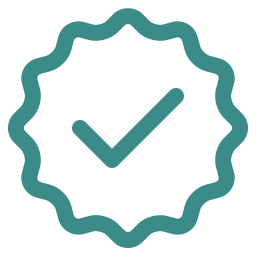Embarking on a Pilates Pilgrimage: Tracing the Roots and Unveiling the Journey of Evolution of a Beloved Fitness Method
Welcome, fellow fitness enthusiasts, to our Pilates pilgrimage!
Today, we embark on a journey to uncover the origins and evolution of this beloved fitness method.
Strap on your yoga pants and join us as we delve deep into the fascinating world of Pilates.
Like a breath of fresh air, Pilates has swept across the globe, captivating hearts and bodies with its unique blend of strength, flexibility, and mindfulness.
Joseph Pilates, the visionary behind this transformative practice, laid the foundation in the early 20th century.
Influenced by yoga and martial arts principles, he crafted a method that not only rehabilitated injured soldiers but also transformed ordinary people into graceful athletes using BASI Systems Reformer.
As we explore the spread of Pilates throughout America and beyond, we'll discover how it evolved from mat exercises to intricate apparatuses designed for precision movements.
Along this path, we'll also unravel how mindfulness and breathwork have been seamlessly integrated into this fitness pilgrimage.
So tighten those abs and get ready to be inspired as we witness the continued evolution and future possibilities of Pilates.
Let's embark on this journey together towards strength, balance, and belonging!
The Origins of Joseph Pilates and His Method
The origins of Joseph Pilates and his revolutionary method take us on a captivating journey into the mind of a visionary fitness pioneer.
Born in Germany in 1883, Joseph Pilates developed his unique approach to exercise in the early 20th century.
Inspired by his own experiences with disciplines like yoga and martial arts, Pilates aimed to improve physical strength, mental focus, and overall well-being.
Influenced by his battles with asthma and other health conditions during his childhood, Joseph Pilates dedicated himself to studying different exercise modalities and their impact on the body and mind.
His passion for movement led him to create a series of exercises that incorporated elements from gymnastics, yoga, dance, and even boxing.
In 1926, Joseph Pilates immigrated to the United States and opened his first studio in New York City.
It was there that he began teaching his method known as 'Contrology,' which emphasized precise movements performed with control and alignment.
This section on the origins of Joseph Pilates and his method sets the foundation for understanding how his approach was influenced by practices such as yoga and martial arts.
The Influence of Yoga and Martial Arts on Pilates
Yoga and martial arts have had a significant impact on the development of Pilates. Over 70% of Pilates exercises have been influenced by these ancient practices.
The fusion of yoga and martial arts with Joseph Pilates' original method has contributed to the evolution and popularity of Pilates as a holistic fitness system.
Here's how these influences have shaped the practice:
- Mind-body connection
Like yoga, Pilates emphasizes the mind-body connection, promoting awareness and control of movement.
This integration allows practitioners to develop a deeper understanding of their bodies and achieve better alignment.
- Core strength
Martial arts techniques such as tai chi and qigong emphasize core strength, which is also fundamental in Pilates.
The focus on abdominal muscles helps improve posture, stability, and overall body strength.
- Flexibility
Both yoga and Pilates place importance on flexibility.
Yoga poses inspire many of the stretches found in Pilates routines, helping practitioners increase their range of motion while maintaining proper alignment.
- Breathing techniques
Proper breathing is crucial in both yoga and Pilates for enhancing relaxation and improving performance.
Incorporating yogic breathing techniques into Pilates sessions enhances concentration, reduces stress levels, and supports efficient movement patterns.
The influence of yoga and martial arts on Joseph Pilates' method has been instrumental in shaping its origins as well as its evolution into a comprehensive fitness system enjoyed by millions worldwide today.
Transitioning into the next section about 'Pilates in the rehabilitation field,' we can see how these influences continue to benefit individuals seeking physical recovery through mindful movement practices.
Pilates in the Rehabilitation Field
Immerse yourself in the world of rehabilitation where mindful movement practices aid individuals on their journey to physical recovery.
Pilates, with its origins deeply rooted in the principles of body control and awareness, has gained significant popularity within the rehabilitation field.
Pilates provides a unique approach to rehabilitation by focusing on strengthening the core muscles, improving flexibility, and enhancing overall body alignment.
This method emphasizes controlled movements and proper breathing techniques, allowing individuals to regain strength and mobility after injury or surgery.
One of the key benefits of incorporating Pilates into rehabilitation is its ability to target specific muscle groups while minimizing strain on joints, especially when performed on a Peak Pilates Fit Reformer.
The exercises can be modified to suit individual needs and limitations, making them suitable for people of all ages and fitness levels.
Furthermore, Pilates aids in correcting postural imbalances that often arise as a result of injury or prolonged periods of inactivity.
By focusing on alignment and stability, this practice helps individuals develop a strong foundation for functional movement.
Incorporating Pilates into rehabilitation programs not only promotes physical healing but also fosters a sense of belonging within a community focused on holistic well-being.
Through shared experiences and support from instructors and fellow participants, individuals are encouraged to take an active role in their recovery journey.
As we explore how Pilates spread throughout the United States, it becomes evident that its integration into various fields has contributed to its widespread popularity.
The Spread of Pilates in the United States
Step into the ever-expanding universe of mindful movement and witness the unstoppable rise of Pilates across the United States.
Pilates, named after its creator Joseph Pilates, has a rich history that originated in Germany during World War I.
After immigrating to the United States in 1926, Joseph brought his innovative exercise method to New York City where it quickly gained popularity among dancers and athletes.
However, it wasn't until the 1980s that Pilates started making its way into mainstream fitness studios and becoming a household name.
Today, you can find Pilates studios in nearly every city across America.
From small boutique studios to large fitness chains with Peak Pilates Casa Reformer, there is no shortage of options for those looking to experience this transformative workout.
The demand for certified Pilates instructors has also skyrocketed as more people recognize the benefits of this low-impact yet highly effective exercise method.
Pilates not only improves strength and flexibility but also promotes body awareness and mindfulness.
It offers a sense of community and belonging as individuals come together to practice this unique form of movement.
As we delve further into the development of Pilates equipment, we will explore how these tools have helped shape and enhance the practice of Pilates over time.
The Development of Pilates Equipment
Discover how the evolution of Pilates equipment for home has revolutionized the practice, allowing for a deeper connection between mind and body.
Pilates, with its origins in the early 20th century, has come a long way since its humble beginnings.
In order to enhance and support the movements and principles of this fitness method, various pieces of equipment have been developed over time.
The development of Pilates equipment can be traced back to Joseph Pilates himself.
He initially used simple props like bed springs attached to hospital beds to create resistance for his exercises.
As interest in Pilates grew, he began refining his designs and creating specialized apparatus such as the reformer, Pilates Cadillac Reformer, and chair.
These machines utilize springs and pulleys to provide both resistance and assistance during workouts, enabling practitioners to achieve greater precision in their movements.
Over the years, advancements in technology have led to further improvements in Pilates equipment.
Today's machines are more versatile and adjustable than ever before, catering to individuals of all fitness levels.
With features like adjustable resistance levels and ergonomic design elements, these modern tools facilitate proper alignment while challenging muscles in new ways.
Incorporating mindfulness and breathwork into Pilates not only enhances physical benefits but also promotes mental well-being.
By focusing on our breath patterns during each movement, we cultivate a sense of presence that allows us to connect more deeply with our bodies.
This integration of mindfulness sets the stage for our subsequent exploration into 'the incorporation of mindfulness and breathwork in Pilates' section where we will delve even deeper into this aspect of the practice.
The Incorporation of Mindfulness and Breathwork in Pilates
Take a moment to fully embrace the transformative power of mindfulness and breathwork in your Pilates practice.
By incorporating mindfulness and breathwork in Pilates, you can enhance the physical and mental benefits of this popular fitness method.
Mindfulness involves being fully present at the moment, and paying attention to sensations, thoughts, and emotions without judgment.
Bringing this awareness into your Pilates practice deepens your connection with your body, improving body awareness, alignment, and control.
It also helps you let go of distractions and focus on each movement with intention and purpose.
Breathwork plays a crucial role in Pilates as well.
Proper breathing techniques facilitate movement efficiency by providing oxygen to working muscles and promoting relaxation during stretches.
Mindful breathing not only enhances physical performance but also calms the mind and reduces stress levels.
The incorporation of mindfulness and breathwork in Pilates offers numerous benefits.
It improves concentration, reduces anxiety, increases body-mind connection, promotes relaxation, boosts energy levels, and enhances overall well-being.
By incorporating these practices into your Pilates routine, you can experience a more holistic approach to fitness that nurtures both your body and mind.
As we explore the continued evolution and future of Pilates, it's important to recognize how these foundational elements have transformed the way we approach our practice.
From its origins as a rehabilitation method to its current status as a popular fitness discipline worldwide, Pilates continues to evolve while staying true to its principles of mindful movement for optimal health.
The Continued Evolution and Future of Pilates
As we look ahead to the future of this transformative fitness discipline, it's fascinating to envision how Pilates will continue to evolve and adapt, much like a beautiful butterfly emerging from its cocoon.
The origins of Pilates can be traced back to Joseph Pilates in the early 20th century, but over time, it has undergone significant changes and advancements.
Today, Pilates has become more than just a workout; it is a lifestyle that promotes overall wellness and balance.
One of the key aspects driving the evolution of Pilates is research and scientific advancements.
As our understanding of human anatomy and movement deepens, new techniques and modifications are being introduced to enhance the effectiveness of Pilates exercises.
Additionally, technological advancements have allowed for the development of innovative equipment that can further challenge practitioners and take their practice to new heights.
Another factor contributing to the evolution of Pilates is its growing popularity worldwide.
With more people embracing this fitness method, there is an increasing demand for specialized classes tailored to individual needs and goals.
This has led to the emergence of various variations such as aerial Pilates, barre Pilates fusion, and cardio Pilates.
Looking into the future, we can expect continued growth in virtual platforms offering online classes and personalized training programs.
These digital resources provide accessibility for individuals who may not have access to traditional studio settings or prefer practicing at their own convenience.
In conclusion, the evolution of Pilates shows no signs of slowing down.
With its rich origins rooted in Joseph Pilates' vision combined with ongoing research advancements and increasing popularity worldwide, Pilates will undoubtedly continue to transform lives for years to come.
Frequently Asked Questions
What are the different types of Pilates equipment available?
There are various types of Pilates equipment available, including the Private Pilates Reformer, Cadillac, Wunda Chair, and Barrel.
These tools help enhance your Pilates practice by providing resistance and support for a full-body workout.
How long does it typically take to see results from practicing Pilates?
Typically, it takes a few weeks of consistent Pilates practice on a Merrithew Reformer to start seeing noticeable results.
However, individual progress varies based on factors such as frequency of sessions, intensity, and adherence to proper form.
Are there any potential risks or contraindications associated with practicing Pilates?
Yes, there are a few potential risks and contraindications associated with practicing Pilates.
However, with proper guidance and modifications, these can be minimized to ensure a safe and effective workout experience for everyone.
Can Pilates help with weight loss?
Yes, Pilates can help with weight loss. It is a full-body workout that builds lean muscle and increases metabolism.
Combined with a healthy diet, it can assist in shedding excess pounds and achieving long-term weight management goals.
Are there any specific certifications or qualifications required to become a Pilates instructor?
To become a Pilates instructor, specific certifications and qualifications are required.
These typically include completing a comprehensive training program approved by reputable organizations such as the Pilates Method Alliance (PMA) and obtaining CPR/AED certification.
Conclusion
In conclusion, we have taken you on a Pilates pilgrimage, delving into the origins and evolution of this popular fitness method.
From Joseph Pilates himself to the influence of yoga and martial arts, we have explored how Pilates has grown and adapted over time.
We've seen how it has made its mark in the rehabilitation field and spread like wildfire in the United States.
And let's not forget about the development of fancy equipment and the incorporation of mindfulness and breathwork.
With all these twists and turns, it's safe to say that Pilates is here to stay, constantly evolving for our sweaty pleasure.
So grab your mats and get ready for a journey that will make your abs scream in delight!




